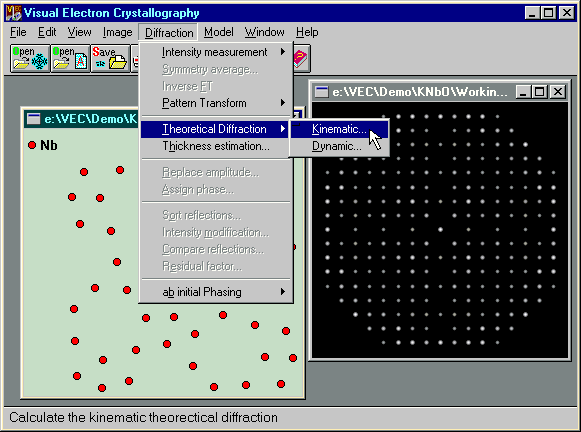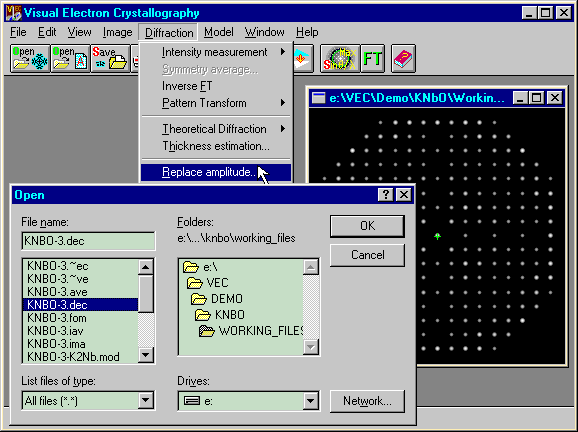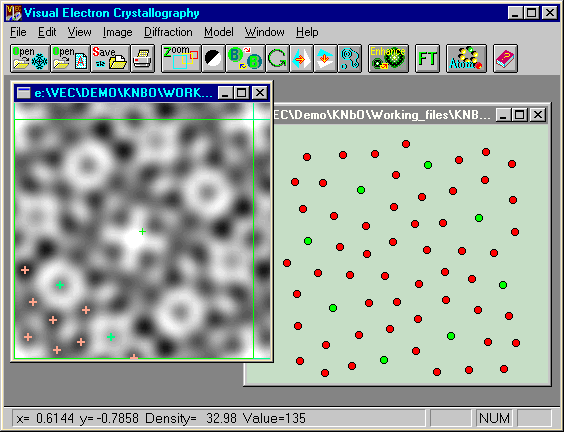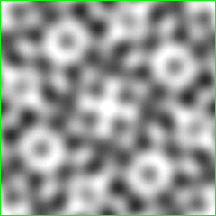
Startng from
the partial-structure model, we can calculate a Fourier map -
the potential distribution map with structure factor magnitudes from the
deconvoluted image and phases from the partial structure. The Fourier map
so obtained will usually contain additional structure details, which can
be added into the partial-structure model. The complete structure can be
obtained by iterating the above procedure.
In the figure
below, make the model window the current window. Pull down the 'Diffraction'
menu and select the item 'Kinematic' in 'Theorectical Diffraction'. This
will calculate a theoretical kinematic diffraction pattern (including magnitudes
and phases) as shown on the right window.

In order to calculate the Fourier map with experimental structure-factor magnitudes and partial-structure phases, the magnitudes of the above diffraction pattern should be replaced by those from the deconvoluted image. To do this, click on the diffraction pattern (the right sub window), pull down the 'Diffraction' menu and select the item 'Replace amplitude ...'. A dialog box will then appear. Browse and select the file of the deconvoluted image (KNBO-3.dec in the present case) and then click 'OK'. Magnitudes in the diffraction pattern will then be replaced. Finally the partial-structure phased Forier map (see the left sub window in next figure) is obtain by clicking the 'FT' button.

Compare the newly obtained Fourier map with the first one (the deconvoluted image), additional structure details are easily found. A new partial-structure model is then created (the right sub window). It contains 3 more independent atoms in comparison with the first model.

The second model led to the third Fourier map, which is nearly the same as the second (see the figure below). Hence the iteration is stop here.
